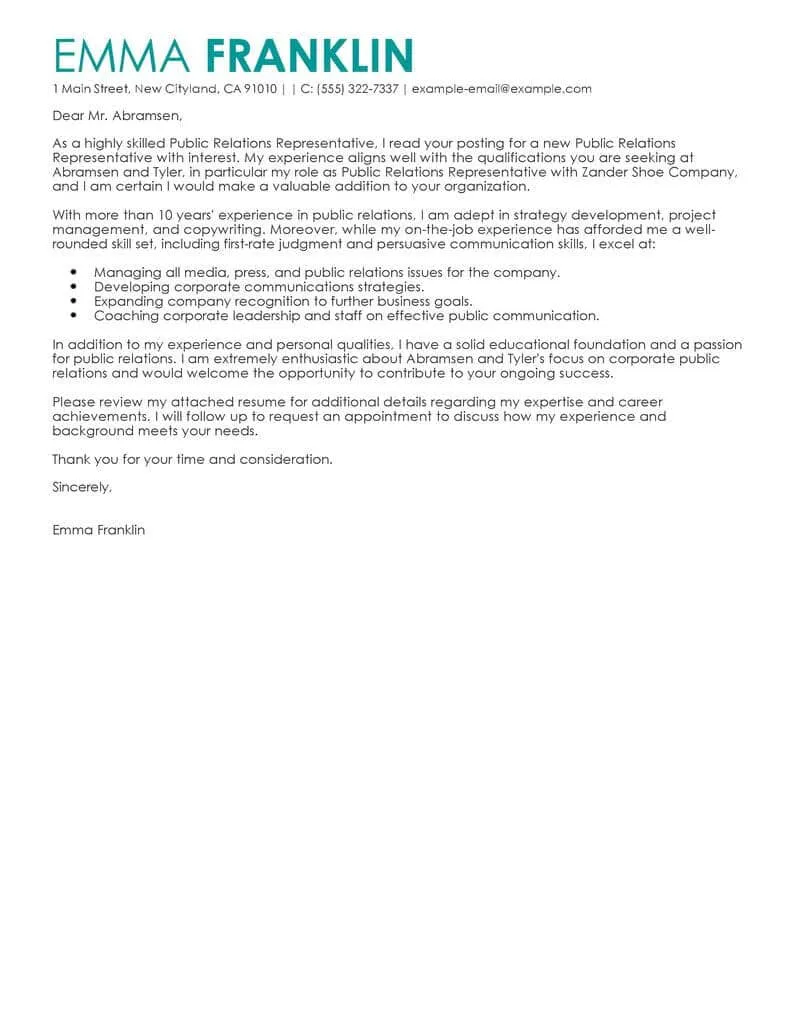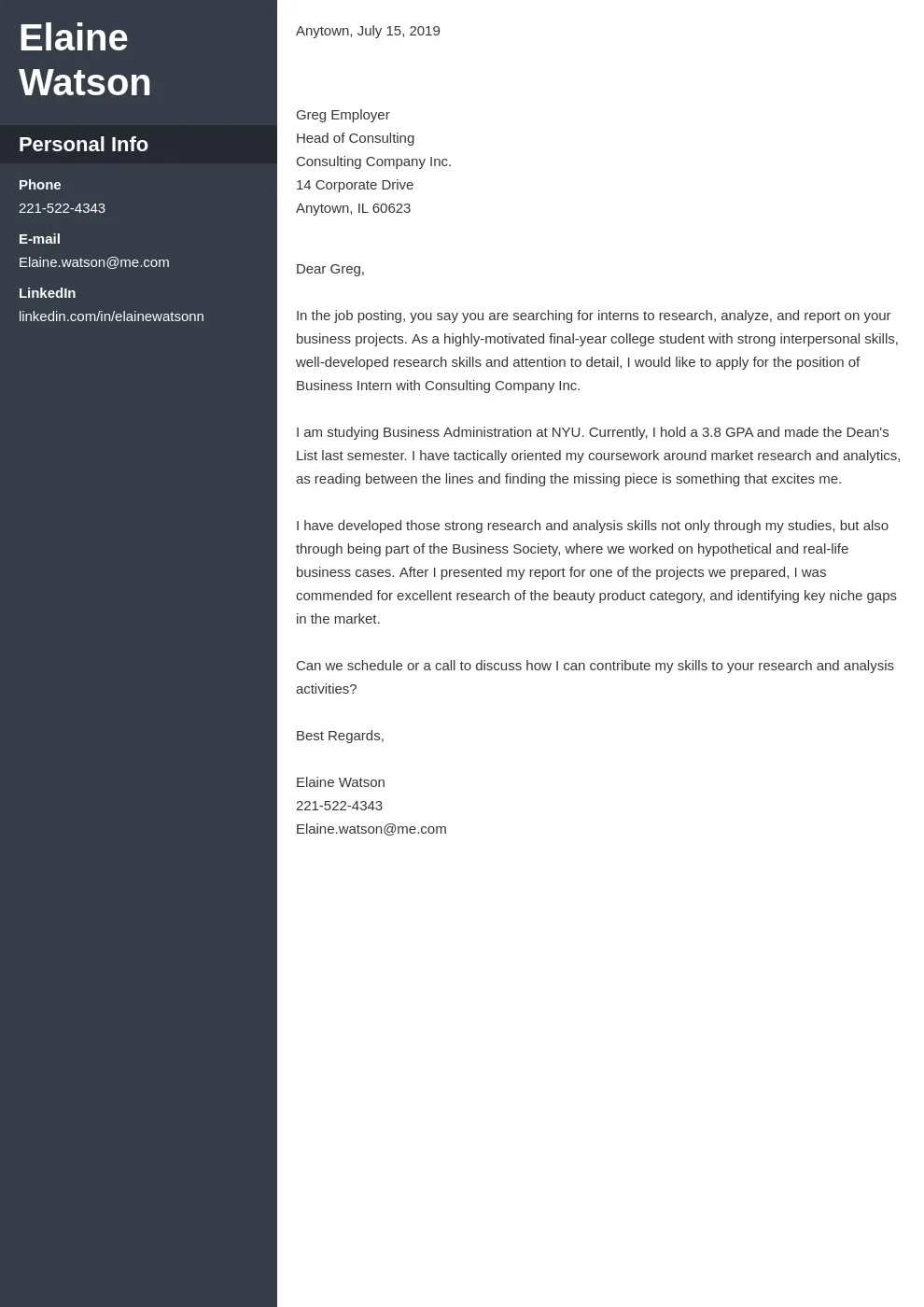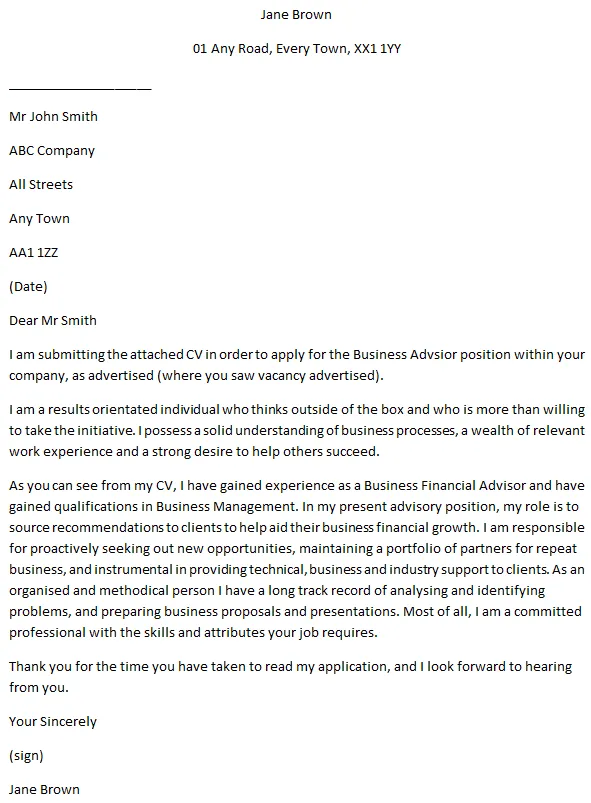What is a Company Cover Letter?
A company cover letter is a crucial document that accompanies your resume when applying for a job. It serves as your first introduction to a potential employer, providing an opportunity to showcase your personality, skills, and enthusiasm for the role. Unlike a resume, which is a concise summary of your qualifications, a cover letter allows you to elaborate on your experiences and explain why you are the ideal candidate for the position. It’s your chance to make a strong first impression and persuade the hiring manager to read your resume carefully. Properly written cover letters are customized for each company and position. It’s a personalized pitch demonstrating how your qualifications align with the job requirements and the company’s values. Cover letters allow you to highlight specific accomplishments and skills that directly relate to the job’s needs, while showing genuine interest in the company itself.
Why are Company Cover Letters Important?
Cover letters are an essential part of the job application process, often overlooked by job seekers but highly valued by employers. They are important because they offer a platform to tell your story and connect your experiences with the job’s requirements. Many employers use cover letters as a screening tool to assess a candidate’s communication skills, attention to detail, and genuine interest in the role. The cover letter presents you an opportunity to bridge gaps in your resume, such as career changes or gaps in employment. Moreover, cover letters display your personality, enthusiasm, and a sense of how you fit within the company’s culture. By demonstrating these qualities, you increase your chances of standing out from other applicants and securing an interview. They allow you to provide context for your resume and give a more detailed explanation of your qualifications.
Elements of a Great Company Cover Letter

A well-crafted cover letter should include several key elements to effectively communicate your value and interest in the position. These elements work together to create a cohesive and compelling narrative that captures the hiring manager’s attention. The most crucial part is tailoring your cover letter to each specific job and company. Your cover letter should not be a generic document; instead, it should directly address the job requirements and showcase how your skills and experiences align with the company’s needs. Additionally, a great cover letter must demonstrate your understanding of the company’s mission, values, and culture. Research the company, explore their website, social media, and any recent news to gain insights into their objectives and achievements, and include any relevant information in your cover letter to show your interest and awareness.
Header and Contact Information
The header of your cover letter should include your contact information. It is the same contact information that is on your resume, including your full name, phone number, email address, and optionally, your LinkedIn profile URL. Make sure your contact information is easy to find and accurate. Directly below your contact information, you should include the date and the hiring manager’s contact information. The hiring manager’s information may include their full name, title, and the company’s address. If you are unable to find the name of the hiring manager, you can use the company’s name and address instead. The header is essential for professional presentation and to make it easy for the employer to contact you. Ensure that your formatting is clean and professional to make a good first impression.
The Greeting
Your cover letter should begin with a professional greeting. It is best practice to address your cover letter to a specific person, if possible. Research the company’s website or use LinkedIn to find the hiring manager’s name. If you cannot find a name, use a general greeting such as ‘Dear Hiring Manager’ or ‘Dear [Department Name] Team.’ Avoid generic greetings such as ‘To Whom It May Concern,’ as they do not demonstrate personal attention. Use the hiring manager’s name correctly and double-check the spelling to ensure you show respect and attention to detail. The greeting sets the tone for the entire letter, so it is crucial to keep it professional and tailored to the recipient.
Body Paragraph 1 Show your Value

The first body paragraph should immediately grab the reader’s attention by stating the specific position you are applying for and how you learned about the opportunity. Briefly mention your strongest qualifications and skills that make you a great fit for the role. Demonstrate your understanding of the company’s mission and values, then briefly state your purpose for applying and explain your interest in the company. Your introduction should be concise and make a strong first impression by highlighting what you bring to the table. This will encourage the hiring manager to continue reading. The opening paragraph sets the tone and demonstrates your understanding and interest from the start.
Body Paragraph 2 Highlight Achievements
The second paragraph should focus on showcasing your achievements and skills. Use specific examples from your previous experiences to demonstrate how your accomplishments align with the job requirements. Use the STAR method (Situation, Task, Action, Result) to provide context and illustrate your contributions. Quantify your achievements whenever possible by using numbers or data to demonstrate the impact of your work. For example, ‘Increased sales by 15% in six months.’ Relate these achievements to the job requirements to show why you are a good fit. The goal is to show the hiring manager how your skills and experience will help them and what specific results they can expect if they hire you.
Body Paragraph 3 Demonstrate Enthusiasm
In the third paragraph, express your enthusiasm for the company and the specific role. Explain what interests you most about the opportunity and the company’s mission or values. Your enthusiasm will come across as genuine when you write with an understanding of the company’s work and your role. Highlight your knowledge of the company’s products, services, or recent achievements. Showcase your understanding of the industry and how you can contribute to the company’s success. Explain how the role aligns with your career goals and what you hope to achieve in the position. Be specific and explain why you are a great fit for the role and why the company should hire you over other applicants. The goal is to express your genuine interest and convince the hiring manager that you are the right choice for the job.
The Closing and Call to Action

Your cover letter should conclude with a strong closing statement and a clear call to action. Express your gratitude for the hiring manager’s time and consideration. Reiterate your interest in the position and your belief that you are a good fit for the role. Include a specific call to action, such as requesting an interview and providing your availability to discuss your qualifications further. Keep the tone professional and enthusiastic. You want to show that you are eager to learn more. Your call to action should be direct and encourage the hiring manager to take the next step. By including a strong closing statement and a clear call to action, you leave a lasting impression and increase your chances of getting an interview.
Formatting and Proofreading
Formatting and proofreading are critical steps to ensure your cover letter is polished, professional, and free of errors. Choose a clean and easy-to-read font, such as Arial, Calibri, or Times New Roman, in a standard size of 11 or 12 points. Keep the formatting consistent throughout the document, including font style, size, spacing, and alignment. Use a professional layout with clear margins and spacing to improve readability. Before submitting your cover letter, carefully proofread it for any grammatical errors, spelling mistakes, or typos. Ask a friend or family member to review your letter. Make sure your cover letter follows the company’s specific guidelines for the application process. Following formatting and proofreading best practices will make a positive impression.
Company Cover Letter Examples Template
Using a template can help you create a well-structured cover letter. There are several cover letter templates available online that you can customize for your specific needs. These templates provide a basic structure and include sections for your contact information, greeting, body paragraphs, and closing. You can find these examples online and adjust them. When using a template, ensure you tailor the content to match the job requirements. Customize the content to reflect your experiences, skills, and enthusiasm for the specific role. This customization is essential because using a generic template without adapting the content will not make a good impression. Using a template can save time and help you create a professional and effective cover letter, but remember to personalize the information.
